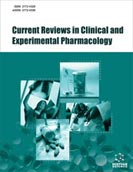Abstract
Background: A subpopulation of statin users such as subjects with chronic kidney disease (CKD), Human Immune virus (HIV), acute coronary syndrome (ACS), revascularization, metabolic syndrome, and/or diabetes may particularly benefit from pitavastatin pharmacotherapy.
Aim: The current systematic review aimed systematically to evaluate the effect of pitavastatin on primary cardiac events in subjects receiving pitavastatin in comparison to the other four statin members.
Methods: We conducted a systematic review on phases III and IV of randomized controlled trials (RCT-s, 11 trials) for subjects with primary cardiac events who received pitavastatin. Subjects diagnosed with any type of dyslipidemia (population 4804) and received pitavastatin (interventions) versus comparator (comparison) with the primary efficacy endpoint of minimization of LDL-C and non- HDL-C, had an increase in HDL-C and/or reduction in major adverse cardiac events (MACE, cardiovascular death, myocardial infarction (fatal/nonfatal), and stroke (fatal/nonfatal) and/or their composite (outcomes). The secondary safety endpoint was the development of any adverse effects.
Results: In the included trials (11), participants (4804) were randomized for pitavastatin or its comparators such as atorvastatin, pravastatin, rosuvastatin, simvastatin and followed up for 12 to 52 weeks. In terms of the primary outcome (reduction in LDL-C), pitavastatin 4 mg was superior to pravastatin 40 mg in three trials, while the 2 mg pitavastatin was comparable to atorvastatin 10 mg in four trials and simvastatin 20 and 40 mg in two 2 trials. However, rosuvastatin 2.5 mg was superior to pitavastatin 2 mg in two trials. Pitavastatin increased HDL-C and reduced non-HDL-C in eleven trials. Regarding the safety profile, pitavastatin has proved to be tolerated and safe.
Conclusion: The FDA-approved indications for pitavastatin included primary dyslipidemia and mixed dyslipidemia as a supplementary therapy to dietary changes to lower total cholesterol, LDL-C, apolipoprotein B (Apo B), triglycerides (TG), and enhance HDL-C. Pitavastatin might be suitable for subjects with diabetes, ACS (reduced revascularization), metabolic syndrome, CKD, HIV, and subjects with low levels of HDL-C. We highly recommend rational individualization for the selection of statin.
Keywords: Dyslipidemia, efficacy, low-density lipoprotein cholesterol (LDL-C), pitavastatin, randomized clinical trial, safety.
[http://dx.doi.org/10.2217/clp.09.20]
[http://dx.doi.org/10.1111/jdi.12483] [PMID: 27181110]
[http://dx.doi.org/10.1016/j.ijcard.2007.01.040] [PMID: 17400311]
[http://dx.doi.org/10.1111/j.1463-1326.2011.01477.x] [PMID: 21812889]
[http://dx.doi.org/10.1111/jdi.12032] [PMID: 24843669]
[http://dx.doi.org/10.1016/j.amjcard.2018.06.017] [PMID: 30217375]
[http://dx.doi.org/10.1111/j.1365-2710.2011.01274.x] [PMID: 21585411]
[http://dx.doi.org/10.3390/biomedicines8110499] [PMID: 33202854]
[http://dx.doi.org/10.1186/2046-4053-4-1] [PMID: 25554246]
[http://dx.doi.org/10.1016/0197-2456(95)00134-4] [PMID: 8721797]
[http://dx.doi.org/10.1016/j.jclinepi.2010.07.015] [PMID: 21208779]
[http://dx.doi.org/10.1016/j.jclinepi.2010.04.026] [PMID: 21195583]
[http://dx.doi.org/10.1016/j.envint.2016.01.004] [PMID: 26827182]
[http://dx.doi.org/10.1016/j.ijcard.2020.01.006] [PMID: 31987664]
[http://dx.doi.org/10.1016/S2352-3018(17)30075-9] [PMID: 28416195]
[http://dx.doi.org/10.5551/jat.29264] [PMID: 26156625]
[http://dx.doi.org/10.1016/j.clinthera.2014.06.009] [PMID: 24998014]
[http://dx.doi.org/10.1016/j.jjcc.2013.03.008] [PMID: 23672789]
[http://dx.doi.org/10.1177/2047487312451251] [PMID: 22679249]
[http://dx.doi.org/10.1253/circj.CJ-10-1281] [PMID: 21498906]
[http://dx.doi.org/10.1185/03007990903290886] [PMID: 19785568]
[http://dx.doi.org/10.1016/j.atherosclerosis.2008.02.008] [PMID: 18472103]
[http://dx.doi.org/10.1016/j.clinthera.2005.07.007] [PMID: 16154486]
[http://dx.doi.org/10.1253/circrep.CR-19-0118] [PMID: 33693218]
[http://dx.doi.org/10.1161/CIRCULATIONAHA.117.032615] [PMID: 29735587]
[http://dx.doi.org/10.5551/jat.1719] [PMID: 19907105]
[http://dx.doi.org/10.1016/j.thromres.2007.08.013] [PMID: 17920663]
[http://dx.doi.org/10.1055/s-0031-1299888] [PMID: 12040967]
[http://dx.doi.org/10.1007/s13340-011-0032-0]
[http://dx.doi.org/10.1517/14656561003641990] [PMID: 20201733]
[http://dx.doi.org/10.1016/S2213-8587(19)30388-2] [PMID: 31862150]
[http://dx.doi.org/10.1016/j.ahj.2018.12.016] [PMID: 30928825]































